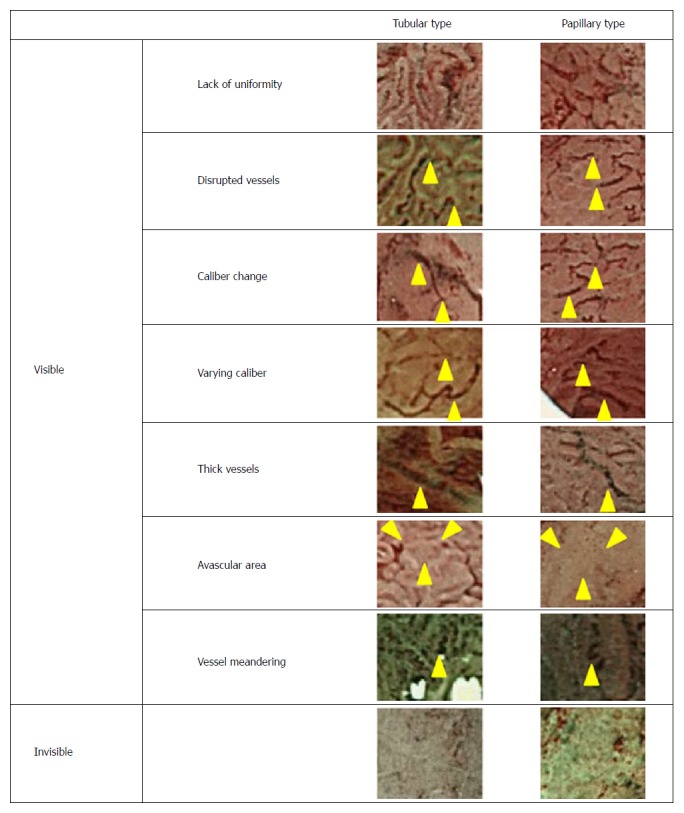Figure 3.

Vascular patterns of colorectal tumors as revealed by narrow-band imaging endoscopy. Colorectal lesions were broadly classified into tubular or papillary types based on narrow-band imaging observations of the histopathologic appearances and proliferation patterns, followed by an evaluation of the microvessel architecture. “Disturbed arrangement” was defined as a disturbance in the form, size, and arrangement of microvessels; “disrupted vessels” was defined as an evident disruption of the microvessels; “varied caliber” was defined as a variance of caliber in the same vessel; “size irregularity” was defined as variance in caliber among different vessels; “thick vessels” was defined as an area harboring cyan-colored vessels relative to vessels in adjacent areas; “avascular area” was defined as an area with no visible vessels; and “vessel meandering” was defined as evident meandering of the blood vessels along a twisting and winding path. Representative images are shown. The locations of vessels representative of each vascular pattern and classification are denoted by arrowheads. Magnification: 125 ×.
